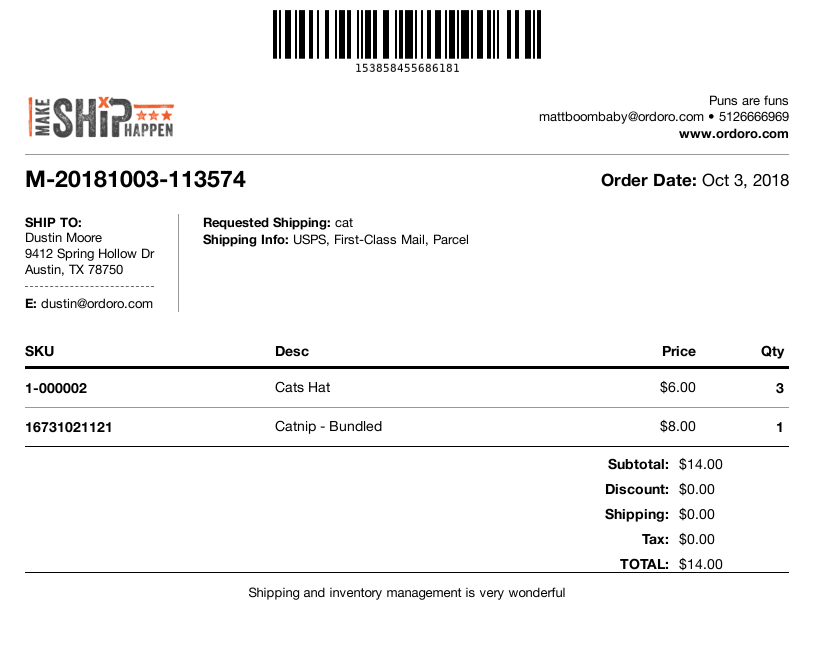← Ordoro Guides / Inventory Management:
UPC Barcode Management
Combined with some sort of inventory management system, barcodes and barcode scanners — functionality that many inventory tools support — bring serious productivity to how your pick and pack orders, as well as how you track inventory.
The Basics of UPCs
To understand how barcodes work, though, it’s important to talk about UPCs — Universal Product Codes.
UPCs are very similar to SKUs, but there are some differences. While SKUs are unique to a business and used to organize products, a UPC is, as the name suggests, universal — it’s an exact code attached to every product out there. Regardless of where it’s sold, a product’s UPC code will remain intact for all business to recognize.

The big guy in charge of creating UPCs is GS1, the Global Standards Organization. Anytime an entrepreneur develops a brand-spanking-new product to sell, they will work with GS1 to create a UPC for it. That’s because UPCs are the standard that most businesses use to organize and describe products in a way that everyone understands.
Boiling it down further, to sell your product through retailers or on your own webstore, you’ll need a UPC for it. However, getting UPCs doesn’t always require using GS1. Some businesses specialize in finding and reselling UPCs at a cheaper cost than working with GS1. Give these a look:
Now back to barcodes. Every UPC has both a numerical twelve-digit code and a scannable barcode that includes all of the relevant product information like a product description and weight. All of that information is the same for whoever’s scanning, whether you’re an e-retailer or wholesaler — it’s universal.
Because of that universality, UPCs are particularly useful in inventory management. If you’re reselling a product — purchasing it from a manufacturer or wholesaler with the intent to resell it — it’s sure to have a UPC code that you can use to identify and organize products, and those products’ SKUs, with ease.
The UPC Process
Bring out the barcode scanner and get it connected to your computer — it can be wired or wireless, bluetooth compatible, or even your smartphone. When using UPCs for inventory management, you’ll either be directly scanning codes on your products or scanning the codes on your packing slip, a list that — surprise, surprise — lists every unit in an order.
Product By Product
When it’s time to fulfill, you can use your barcode scanner and scan products to bring up orders on your inventory management system.
First, store one type of product in a certain container — it can be a bag, box, or tray. Then search for and print out that product’s UPC barcode via your inventory management system and tape it to the storage container.
Once it’s time to fulfill an order, you can scan as you go, picking a product individually and scanning that taped UPC code to note that it’s been accounted for. The inventory management tool will react, adjusting the inventory quantity accordingly.
Packing Slips
You’ll do the same type of organization in this situation, storing products of the same kind in specific containers that are labeled with the product’s UPC. But instead of picking and scanning as you go, you’ll do it in one go.

When it’s time to fulfill an order, print out a packing slip, that piece of paper listing out every product within the order. Then collect every single product on the packing slip and simply scan the barcode on it. The inventory management system will react, adjusting every product’s quantity accordingly.